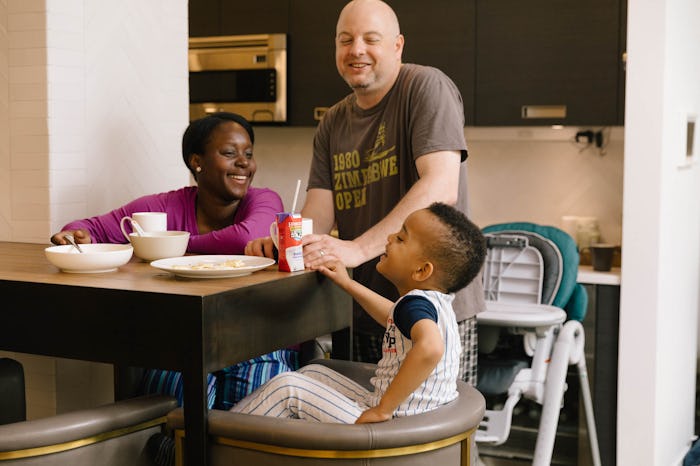Life
Here's What Ophthalmologists Want You To Know About Your Child's Lazy Eye
So, your child seems to have a lazy eye and you have received contradicting advice on whether or not you can do anything about it. If you're like most parents, this state of unknown can be quite stressful; after all, we moms and dads tend to dislike taking "no" for an answer when it comes to finding solutions for our kids' various needs. Luckily, in this case at least, you don't have to. Can you correct a child's lazy eye? Eye doctors say there are some really effective forms of treatment. But first, what exactly is a lazy eye?
In an interview with Romper, Nashville-based ophthalmologist Dr. Ming Wang explains, "Lazy eye, medically termed 'amblyopia', is an assymetric development between the eyes, where one eye develops much more strongly than the other. The strong eye gets the stimulation it needs to develop 20/20 vision, while the 'lazy eye' does not; even with glasses or contacts."
But it actually gets more complex than that. There are three different kinds of amblyopia — refractive, strabismic, and deprivation — which is important to note because the treatment plans are different for each. So before you start frantically Googling therapeutic options, you'd better be sure the problem has been accurately diagnosed first.
According to Dr. Wang, refractive amblyopia means one eye has a higher prescription, and can be corrected with glasses. Strabismic amblyopia means that the eye is turned inwards or outwards, preventing it from receiving the proper stimulation; this must be treated with eye muscle surgery or vision therapy. Lastly, deprivation amblyopia means that one eye has something blocking the light path, like a cataract. In this case the source has to be removed, such as with cataract surgery.
Once the source of the problem has been treated, Wang tells Romper, the lazy eye needs to be treated so it can receive the additional stimulation it needs to strengthen. "This generally involves some form of patching the good eye," he says, "which causes the lazy eye to work more heavily. This can be done at home or in an office setting, called vision therapy. The important thing is it needs to be done as early in life as possible."
Which, obviously, leads to the million dollar question for parents: At what age does it become too late to correct a child's lazy eye? Wang says it has traditionally believed to be before puberty; sometime between the age of 7 and 12. However, he points out that recent research shows treatment can be effective up until age 17 — and in some cases, even later.
But don't let that give you license to go putting this on the back burner. Just because all hope is not lost for older children doesn't mean you should wait around. Dr. Benjamin Ticho, Associate Professor of Pediatric Ophthalmology at the University of Illinois at Chicago, warns parents that delayed diagnosis can lead to irreversible vision loss in a child. Dr. Ticho recommended getting a complete ocular exam with dilating eye drops ideally before the age of 3, but at least by the start of kindergarten.
Ming tells parents, "It's important for all children to have an evaluation by an optometrist or ophthalmologist to rule out factors that could lead to the development of amblyopia, and if they're identified, to have them treated appropriately." In addition to agreeing with Ticho's age recommendations, Ming adds that the American Optometric Association and the American Academy of Ophthalmology both recommend that infants should have their first comprehensive eye exam around age 6 months. "If these age guidelines are followed," he says, "The risk of amblyopia can be minimized significantly."
Check out Romper's new video series, Bearing The Motherload, where disagreeing parents from different sides of an issue sit down with a mediator and talk about how to support (and not judge) each other’s parenting perspectives. New episodes air Mondays on Facebook.
